Beauford Delaney and Protest
Monday, June 1, 2020
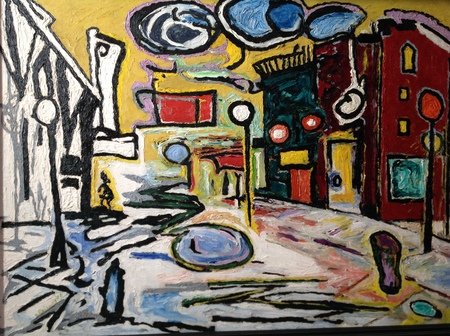
Beauford Delaney, Untitled (Village Street Scene), 1948. Terra Foundation of Art. Detail photos Rachel Cohen.
In these hard days, the sounds of our neighborhood are of the unusual silence of the pandemic, the birds singing, of sirens, both ambulance sirens and police sirens, of the 7 pm neighborhood pot-banging in solidarity with the Black Lives Matter protestors, the muffled greetings between neighbors, masked and at a distance, the imagined sounds of videos of police violence that I have not played, but have read about, the imagined sounds of protests that I have not attended, but feel I can hear from a few miles away, and the imagined sounds of shattering glass that I cannot hear, but know to be happening a few streets from here.
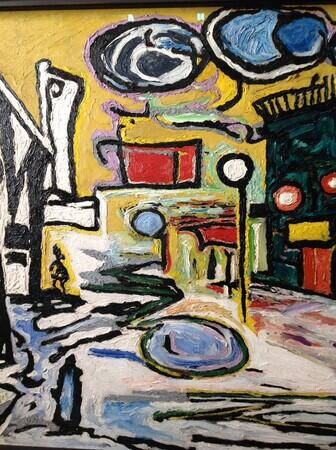
I am thinking, as I often am, about the relationship of art and protest. I want there to be art, I want there to be protest.
In February, I was a plenary speaker at a conference called Beauford Delaney and James Baldwin: In a Speculative Light. It was an excellent conference, and I am still very actively involved with what I began to learn there – still reading books by the other speakers, still turning over in thought their stray comments and questions, which lodged in my mind.
I can hear helicopters overhead, as we did last night until late into the night
To write my remarks, I spent quite a bit of time with the four works by Beauford Delaney that I could see in Chicago. My remarks focused on a great self-portrait belonging to the Art Institute of Chicago:
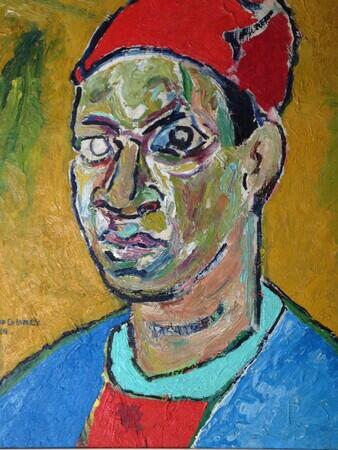
Beauford Delaney, Self-Portrait, 1944. Art Institute of Chicago. This, and all detail photographs, Rachel Cohen.
And on an important landscape belonging to the Terra Foundation of Art, which Delaney painted of the streets in Greenwich Village, where he lived and worked:
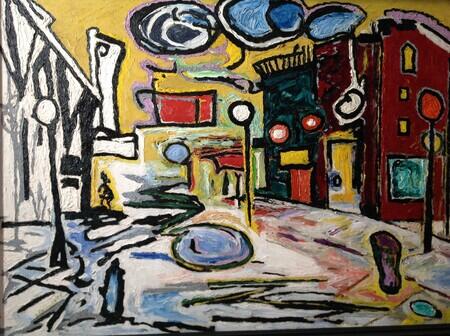
I take this self-portrait, painted in 1944, and this streetscape, painted in 1948, to say something about what it was to be a man whom others immediately saw as Black, and, it seems, a man who saw himself as Black, and to say something about city streets, and what kind of space and consciousness they may make for derogation and self-assertion.
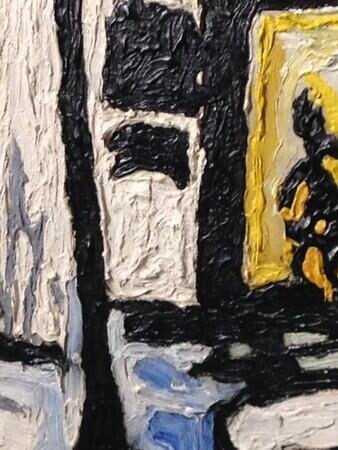
I also think these works talk about other things that are not necessarily related to these subjects.
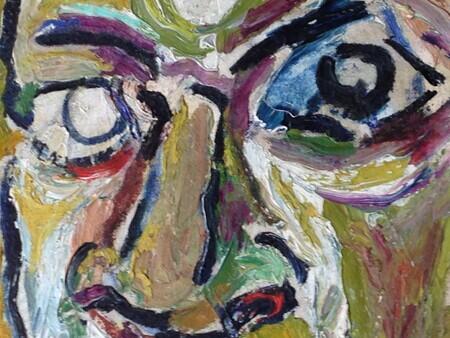
This morning, I have been reading Stephen Best’s book None Like Us: Blackness, Belonging, Aesthetic Life, and in particular its chapter on works by the artist El Anatsui. Stephen Best is interested in thinking like and with these works. The book is having an effect on my thinking, though I am only in the early stages of being able to say what I am learning.
Months ago, when I stood in front of the self-portrait, it seemed to me that Delaney was urging me to think with paint, and perhaps that he was even amused at the literalness.
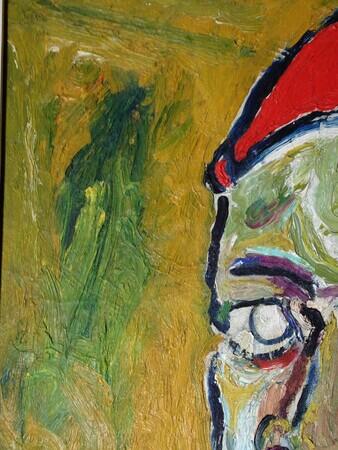
I have been writing about works by Delaney in different entries in this notebook. The first entry in the Frederick Project, and an experience from which this whole project draws continuing energy, was about a Delaney watercolor that belongs to the Knoxville Museum of Art. Another entry looked at a set of nine drawings, self-portrait sketches; another at an abstract oil painting; another at a self-portrait and its use of ochre next to a self-portrait by Berthe Morisot.
I think there are places where art and protest overlap, some where they are mutually illuminating, other places where there may not be much relationship, or a negative one. I think it would be a kind of pretense to say that art is redemptive, or that by studying art I may make progress or help others to make progress.
I try to hold to the sense that art and protest may both make room for reflection.
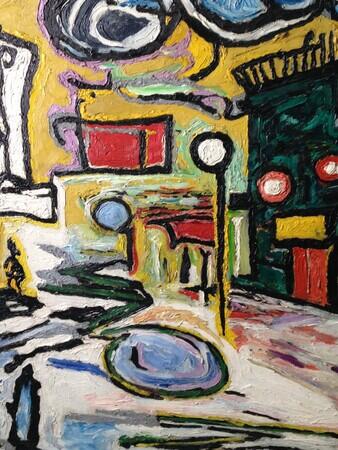
This week I am and will be thinking about the city streets around our house, which is in the Kenwood neighborhood built by meat-packing millionaires around 1900, and which is also on the South Side of Chicago, I am going to try to think very locally. About these two works – the landscape and the self-portrait. And about all the little areas of paint, which I am fortunate to have hundreds of pictures of. I wonder if it will be possible to make a kind of heterogenous topography, area by area, showing one neighborhood of meanings in a painting.